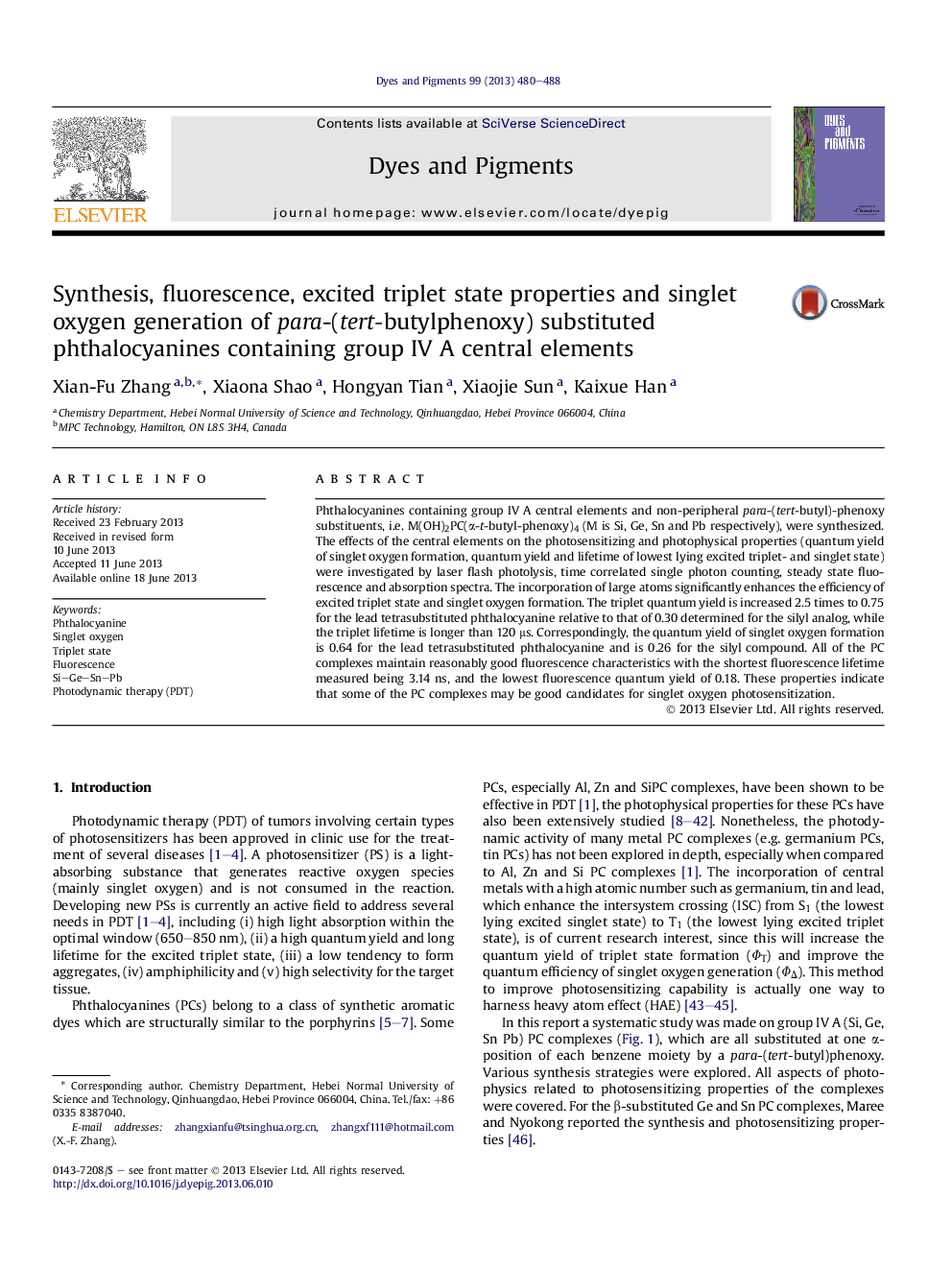| Article ID | Journal | Published Year | Pages | File Type |
|---|---|---|---|---|
| 176497 | Dyes and Pigments | 2013 | 9 Pages |
•Phthalocyanines containing central elements Si, Ge, Sn and Pb were synthesized.•The photosensitizing and photophysical properties were investigated.•Heavy atom effect significantly enhances the photosensitizing ability of PC complexes.•The triplet quantum yield is increased 2.5 times to 75%.•The quantum yield of singlet oxygen formation is promoted 2.5 times to 68%.
Phthalocyanines containing group IV A central elements and non-peripheral para-(tert-butyl)-phenoxy substituents, i.e. M(OH)2PC(α-t-butyl-phenoxy)4 (M is Si, Ge, Sn and Pb respectively), were synthesized. The effects of the central elements on the photosensitizing and photophysical properties (quantum yield of singlet oxygen formation, quantum yield and lifetime of lowest lying excited triplet- and singlet state) were investigated by laser flash photolysis, time correlated single photon counting, steady state fluorescence and absorption spectra. The incorporation of large atoms significantly enhances the efficiency of excited triplet state and singlet oxygen formation. The triplet quantum yield is increased 2.5 times to 0.75 for the lead tetrasubstituted phthalocyanine relative to that of 0.30 determined for the silyl analog, while the triplet lifetime is longer than 120 μs. Correspondingly, the quantum yield of singlet oxygen formation is 0.64 for the lead tetrasubstituted phthalocyanine and is 0.26 for the silyl compound. All of the PC complexes maintain reasonably good fluorescence characteristics with the shortest fluorescence lifetime measured being 3.14 ns, and the lowest fluorescence quantum yield of 0.18. These properties indicate that some of the PC complexes may be good candidates for singlet oxygen photosensitization.
Graphical abstractFigure optionsDownload full-size imageDownload as PowerPoint slide
